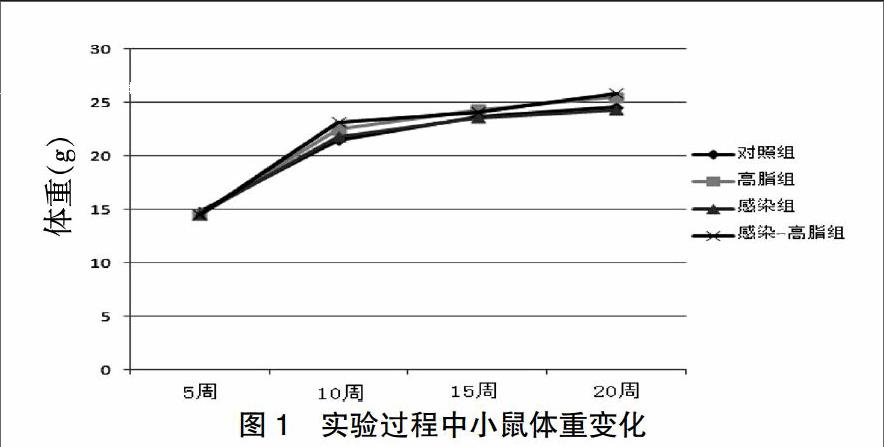热预处理对小鼠创伤性脑损伤的神经保护作用
2015-10-16陈金绪等
陈金绪等



[摘要] 目的 观察热预处理(HA)对小鼠创伤性脑损伤(TBI)的神经保护作用。 方法 60只小鼠分为正常对照(NT)组、HA组、TBI组、HA+TBI组,每组15只,采用改良自由落体损伤装置建立小鼠TBI模型。观察和比较各组小鼠的麻醉苏醒时间、苏醒后的一般行为学表现、脑组织含水量,脑切片苏木精-伊红(HE)染色观察病理学改变,FJB染色观察神经元变性情况。 结果 与TBI组比较,HA+TBI组的麻醉苏醒时间缩短,脑组织含水量降低,脑组织染色显示病理损伤程度减轻,变性神经元减少,差异有统计学意义(P < 0.05)。HA+TBI组的麻醉苏醒时间长于NT组与HA组,脑组织含水量高于NT组与HA组,差异有统计学意义(P < 0.05)。NT组与HA组的麻醉苏醒时间和脑组织含水量比较,差异无统计学意义(P > 0.05)。 结论 闭合性脑损伤模型构建成功,HA对闭合性脑外伤具有神经保护作用。
[关键词] 热预处理;创伤性脑损伤;神经保护作用
[中图分类号] R651 [文献标识码] A [文章编号] 1673-7210(2015)09(a)-0020-04
[Abstract] Objective To investigate the neuroprotective effects of heat preconditioning (HA) on mice with traumatic brain injury (TBI). Methods 60 mice were divided into normal control (NT) group, HA group, TBI group and HA+TBI group, each group of 15 mice. Free fall injury improved device was adopted to establish the mice model of TBI. The anesthesia recovery time, general behavior, brain tissue water content of mice in each group were compared and observed. Pathological change was observed by using HE staining, neuronal degeneration was observed by using FJB staining. Results Compared with TBI group, the anesthesia recovery time of HA+TBI group was shorter, brain tissue water content of HA+TBI group was lower, pathological damage of brain tissue in HA+TBI group was reduced, neuro degeneration of HA+TBI group was decreased, the difference was statistical significance (P < 0.05). The anesthesia recovery time of HA+TBI group was longer than that of NT group and HA group respectively, brain tissue water content of HA+TBI group was higher than that of NT group and HA group respectively, the difference was statistical significance (P < 0.05). The anesthesia recovery time and brain tissue water content of NT group and HA group were compared, with no statistical difference (P > 0.05). Conclusion Closed TBI mice model has established successfully, and HA can offer neuroprotective effects on closed TBI.
[Key words] Heat preconditioning; Traumatic brain injury; Neuroprotective effect
创伤性脑损伤(traumatic brain injury,TBI)是慢性致残和致死的主要原因之一,也是我国儿童和青年的主要致残、致死原因。脑外伤后,局部组织发生继发性的缺血缺氧性损伤,导致神经细胞出现不可逆的损伤,另外,机械性损伤可直接损伤脑细胞,使神经元发生直接死亡或促进程序性死亡,这两种损伤方式都可导致患者出现各种神经后遗症。因此,对神经损伤的防治是抢救TBI的重要环节之一,应对热预处理(HA)的保护效应进行探讨。有研究显示,机体在HA后可产生保护效应,通过交叉耐受机制,对多种应激源具有保护作用[1-2]。HA的保护效应是近年来国内外相关研究的热点,且HA在实践操作上更便捷,其应用价值更大。本研究采用脑外伤模型,旨在探讨HA对小鼠TBI的神经保护作用。
1 材料与方法
1.1 实验动物与分组
60只8~9周龄健康雄性C57小鼠(由广西科技大学实验动物中心提供,合格证编号:2005A033),体重21.3~23.5 g,采用随机数字表法分为正常对照(NT)组、HA组、TBI组、HA+TBI组,各15只。NT组正常饲养,自由食水,照明7:00~19:00。其余3组按下述条件处理。饲养及实验过程中遵守实验动物管理与保护准则。
